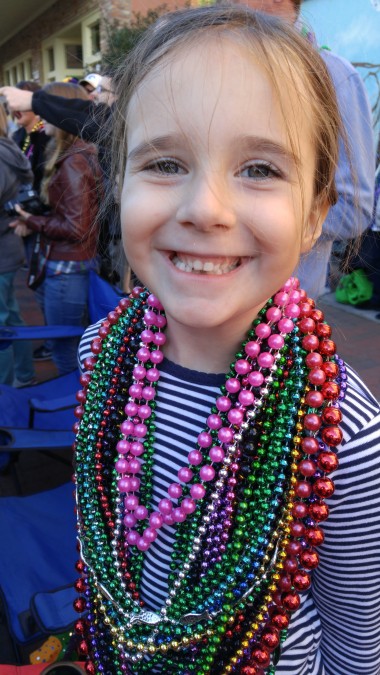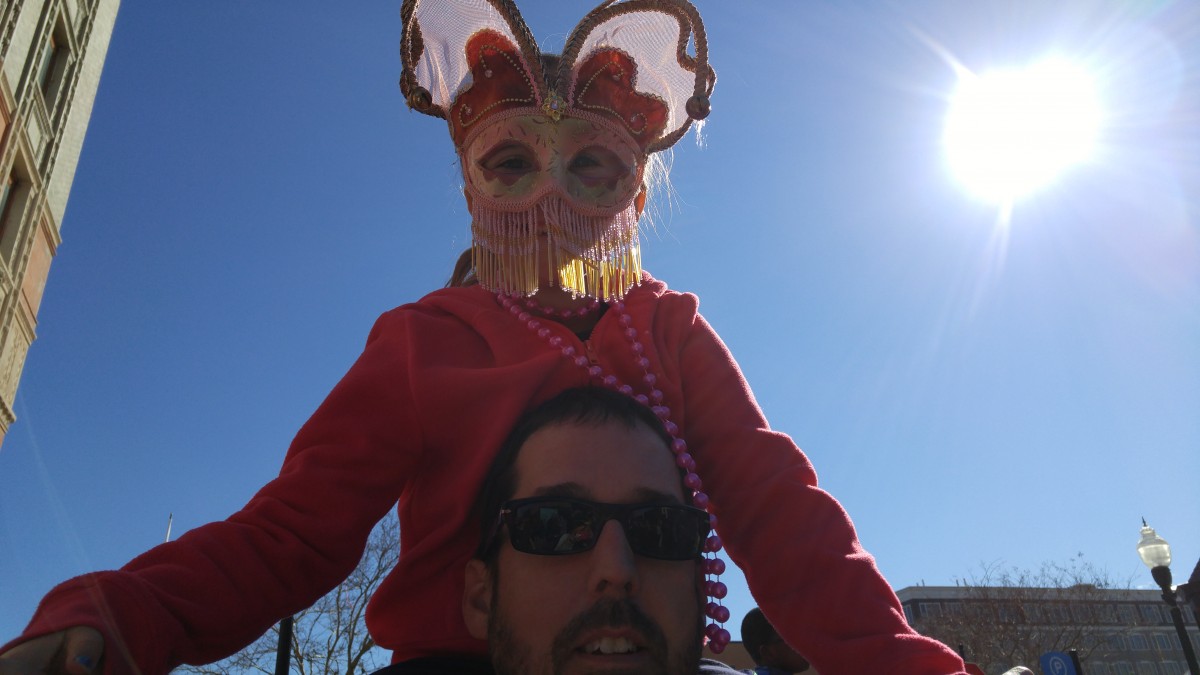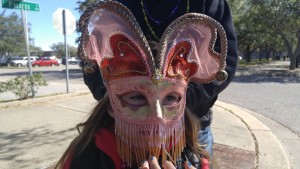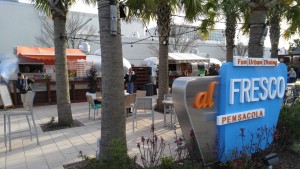“Laissez les bons temps rouler” — let the good times roll — is the general theme throughout the Florida panhandle, Alabama, Mississippi, Louisiana and east Texas during the celebrations leading up to Mardi Gras. New Orleans may celebrate it most famously, and it may have its roots in Mobile, but Mardi Gras happens in areas throughout the deep south, including near our camping digs in Perdido Key. Thanks to family familiar with local Mardi Gras festivities, this trio enjoyed our inaugural Mardi Gras day parade in downtown Pensacola, and this much we know: Mardi Gras parties are wild.
Most people are familiar with Mardi Gras in New Orleans — the big, crazy parade that seem raucous or lewd and debauched for sure, and includes the throwing of beads. What is likely less familiar to most of the country is that Mardi Gras is a series of Christian Carnival events and festivities that begin around the feasts of Epiphany in January and end on “Fat Tuesday,” the day before the Lenten Ash Wednesday in February. In some countries, including England, Mardi Gras is known as Shrove Tuesday, from “shrive,” to confess. No matter where Mardi Gras takes place, the idea is to eat, drink, be merry and to pour your heart out, until it is time to prepare the faithful for the Easter Holy Week in April through prayer, penance, atonement and more. (Wikipedia)

Mardi Gras generally takes place in areas historically rich in ethnic French culture. It was originally introduced by the LeMoyne brothers, French Catholics who were sent to Louisiane by Louis the XIV to defend the territory. One of the brothers who led the expedition landed upstream of the MIssissippi River near present day New Orleans on Lundi Gras, the day before Mardi Gras, on March 2, 1699, and named his landing point Point du Mardi Gras. The first Mardi Gras celebration is said to have taken place in Mobile, Alabama, in 1702, which, at the time, was the first capital of French Louisiana. The first krewe, or Carnival mystic society, was formed in there in 1711. As the capital of French Louisiana moved to Biloxi in 1720 and to New Orleans in 1723, the Mardi Gras traditions went with them. (Wikipedia)
As for our first Mardi Gras , we waited a long time for the parade to begin. Lots of folks were camped on site to see the parade with snacks, beers and beads. The Pensacola parade was definitely kid friendly, and tons of families were lined up to see the action. Once the music and parade began, everything and everyone changed. Folks stood hoping to catch whatever the krewes had to offer. Luna certainly perked up as she heard many favorite songs and understood that holding her hand up in front of her face meant that she might prevent being smacked by lobbed beads as well as catching them. The parade went on for a long time and it ended up being a lot of fun. Luna landed a bunch beads, but we heard that it is bad luck to count them, so we won’t tell you how many we think she acquired. It was completely fun and exhausting, and we would enjoy experiencing Mardi Gras in other cities just to feel the difference culturally. But for the record, you can catch Mardi Gras goings-on for a couple of weeks leading up to Ash Wednesday in many, many parts of the south, not just New Orleans or Pensacola. If you are up for it, come on down to the south for the winter and check out what’s happening. You may just be surprised.
In the meantime, here is our day in pictures.
- Pegasus and Flying Beads.










